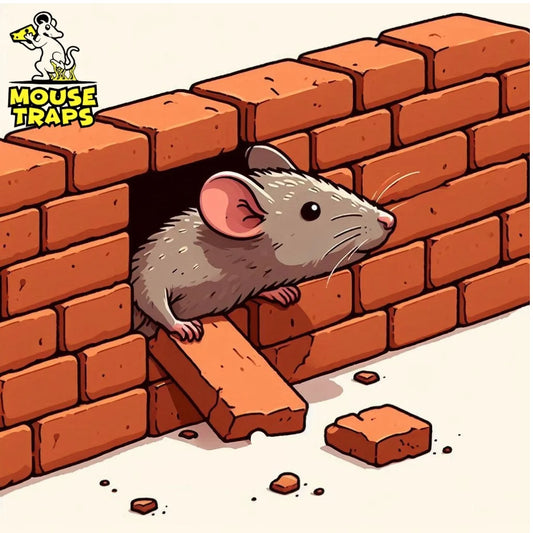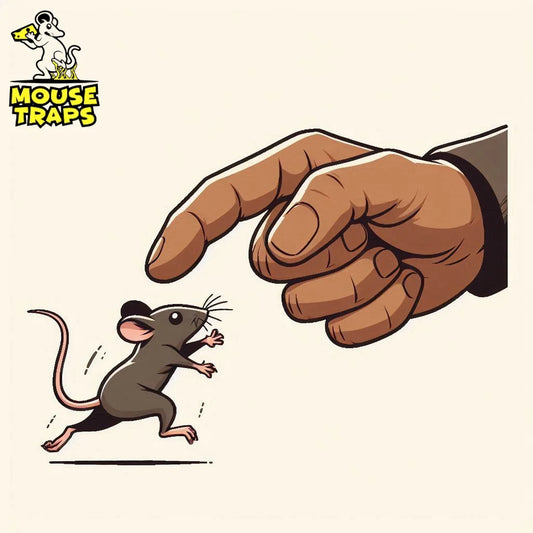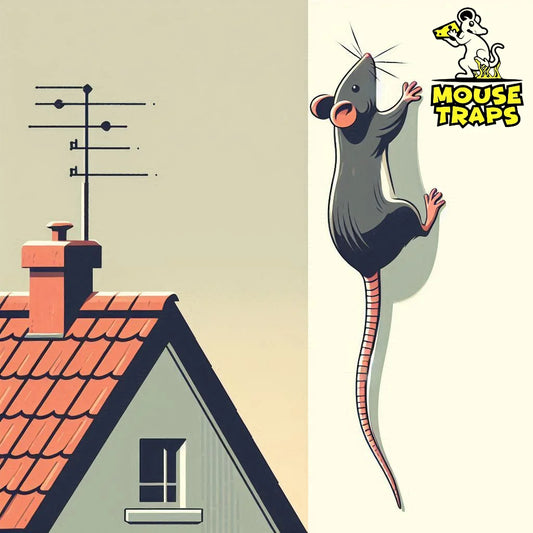Introduction:
Living in the UK, our agricultural heritage is rich and diverse, with farms forming the backbone of our rural economy. However, with the joys of livestock farming come the inevitable challenges, one of the most insidious being the presence of rats. These pests are not a bother; they pose a threat, by spreading diseases that can harm animals disrupt farm activities and lead to considerable financial setbacks. This article explores the subject of controlling rat populations, on farms through the use of mouse traps safeguarding the well being and security of your livestock.
The Hidden Threat: Rats and Livestock
Why Rats are a Problem?
Rats are well known for their knack, in spreading illnesses, which's a worry for farmers. They transport germs that can affect livestock causing health problems and potential deaths. Illnesses like leptospirosis, salmonellosis and foot and mouth disease can be passed on through interaction, with rats or their waste, urine and saliva.

Leptospirosis:
This bacterial infection can be particularly devastating, causing fever, reproductive issues, and even death in livestock. Rats shed leptospira bacteria in their urine, contaminating water sources and feed.
Salmonellosis:
Rats are carriers of Salmonella bacteria, which can lead to severe gastrointestinal distress in livestock, affecting their growth and productivity.
Foot-and-Mouth Disease:
Although not as common, rats can act as vectors for the virus causing this highly contagious disease, which affects cloven-hoofed animals and can lead to significant economic losses.
The Economic Impact:
The financial repercussions of a rat infestation on a farm are manifold. Apart, from the expenses linked to treating illnesses and caring for animals there are costs like decreased efficiency, livestock loss and harm, to stored food and tools. According to a study by the UK Centre for Ecology & Hydrology, rats cost British agriculture millions of pounds annually in damages and control measures.

Effective Rat Control: Why Mouse Traps Work?
The Advantage of Mouse Traps:
Mouse traps, when used correctly, are an effective and humane method for controlling rat populations on farms. They offer several advantages over other control methods such as poisons and rodenticides.
- Mouse Traps: Mouse traps pose less risk to other animals and humans compared to poisons, which can inadvertently harm pets, wildlife, and even children.
- Targeted Control: Traps allow for precise targeting of rat populations, making it easier to monitor and manage infestations.
- Environmentally Friendly: Unlike chemical treatments, mouse traps do not contribute to environmental pollution.
- Cost-Effective: Traps are a one-time investment and, if maintained properly, can be reused for many years.
Types of Mouse Traps:
There are various types of mouse traps available, each with its unique benefits and applications:

Snap Traps:
The traditional snap trap is the most commonly used type. It's inexpensive, easy to set, and effective. When a rat triggers the mechanism, a bar snaps down, killing it instantly.
Electronic Traps:
These traps use a high-voltage shock to kill rats instantly. They are hygienic, easy to use, and allow for quick disposal of dead rodents without touching them.
Live Traps:
Live traps capture rats alive, allowing for their relocation. This approach is kinder. May be preferred by individuals who're averse, to harming animals. Nonetheless it necessitates planning on where to relocate the rodents to avoid infestations.
Glue Traps:
Glue traps are sticky boards that capture rats when they walk across them. While effective, they are often criticized for being inhumane, as they do not kill the rats instantly and can cause prolonged suffering.
Setting Up Mouse Traps on Your Farm:
Identifying Rat Hotspots:
To effectively use mouse traps, it's essential to identify where rats are most active on your farm. Look for signs such as droppings, gnaw marks, and burrows. Common hotspots include:
- Barns and Stables: Rats are attracted to stored feed and livestock bedding.
- Feed Storage Areas: Grain and feed bins are prime targets.
- Water Sources: Rats need water to survive, so any standing water or troughs are potential hotspots.
- Fences and Walls: Rats often use fences and walls as pathways.

Proper Placement of Mouse Traps:
For maximum efficacy, place traps along rat pathways and near their nesting sites. Here are some tips for effective trap placement:
- Along Walls: Rats tend to run along walls, so place traps perpendicular to walls with the trigger side facing the wall.
- Dark and Secluded Areas: Rats prefer dark, hidden places, so set traps in corners and under objects.
- Near Food Sources: Place traps near feed bins and storage areas where rats are likely to forage.
- Regular Monitoring: Check traps daily to remove caught rats and reset traps as necessary.

Baiting Your Traps:
The right bait can make a significant difference in the success of your trapping efforts. Effective baits include:
- Peanut Butter: Its strong smell attracts rats.
- Cheese: A traditional favorite that works well.
- Pet Food: Dry pet food can be an attractive bait.
- Fruits and Vegetables: Fresh produce can lure rats effectively.

Integrating Mouse Traps with Other Control Measures:
While mouse traps are highly effective, integrating them with other pest control measures can provide a comprehensive solution to rat infestations.
Sanitation and Hygiene:
Maintaining cleanliness on your farm is crucial. Proper waste management, regular cleaning of feed storage areas, and securing food sources can significantly reduce rat attraction.

Structural Maintenance:
Seal cracks and holes in buildings, repair damaged fences, and ensure doors and windows are rodent-proof. Preventing entry is the first line of defense against rat infestations.
Biological Control:
Introducing natural predators such as barn owls can help control rat populations. Barn owls are effective hunters and can significantly reduce rat numbers over time.
Professional Pest Control:
In severe cases, enlisting the help of professional pest control services may be necessary. Professionals can provide advanced solutions and ensure thorough eradication of rat infestations.

Addressing Potential Concerns:
What about the Ethical Concerns of Using Traps?
While some may have ethical concerns about using traps, it's important to consider the broader context of protecting livestock health and farm sustainability. Live traps are an option for those who prefer not to kill rats, allowing for humane relocation.
Are Mouse Traps Enough?
Mouse traps are highly effective but should be part of a broader integrated pest management strategy. Combining traps with sanitation, structural maintenance, and biological control will provide the best results.
What if Traps Don't Work?
If traps are not yielding results, reassess your placement and bait choices. Persistent problems may require professional pest control services to identify and address underlying issues.
FAQs:
Conclusion:
Rats can be a problem, for livestock and farm productivity. To keep them in check farmers can use mouse traps as part of a control plan. By combining trapping with sanitation maintaining structures well and using controls farmers can take a thorough approach, to managing rat populations and keeping their livestock safe. Stay vigilant, monitor your traps regularly, and adapt your strategies as




